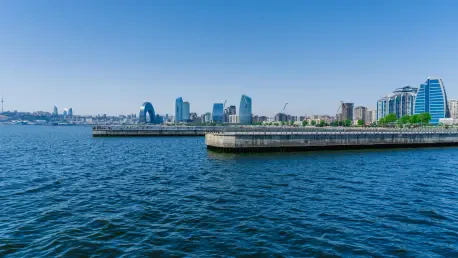I’m thrilled to sit down with Marco Gaietti, a seasoned expert in business management with decades of experience in strategic operations and customer relations. Today, we’re diving into the exciting redevelopment of Tartus Port in Syria, a project spearheaded by DP World. Marco brings a wealth of insight into how such initiatives can transform regional trade and drive economic recovery. Our conversation will explore the strategic importance of this port, the specifics of the ambitious agreement behind its modernization, and the broader implications for Syria’s economy and regional connectivity.
Can you walk us through the core aspects of the 30-year concession agreement for the Port of Tartus and what it aims to achieve?
Absolutely. The agreement between DP World and Syria’s General Authority for Land and Sea Ports is a landmark deal spanning 30 years. It’s designed to transform Tartus into a pivotal trade hub connecting Southern Europe, the Middle East, and North Africa. DP World is committing a hefty $800 million over this period to overhaul the port’s infrastructure, introducing state-of-the-art facilities and systems. The goal is to boost efficiency and capacity, making Tartus a competitive player in regional trade while supporting Syria’s economic reintegration after years of challenges.
How does the redevelopment of Tartus Port fit into Syria’s broader journey of economic recovery?
This project is a cornerstone for Syria’s recovery after over a decade of conflict and underinvestment in infrastructure. The port isn’t just a gateway for goods; it’s a symbol of rebuilding trust and opportunity. By modernizing Tartus, Syria can reconnect with global trade networks, attract foreign investment, and stimulate local industries. It’s about creating a ripple effect—improving trade infrastructure can spark job creation and stabilize supply chains, which are vital for a nation looking to stand on its feet again.
What kinds of upgrades and innovations are planned to modernize the port’s operations?
The redevelopment plan is quite comprehensive. We’re talking about constructing new infrastructure to handle a variety of cargo types, from containers to general goods. Beyond physical upgrades, there’s a strong focus on integrating advanced cargo-handling equipment and digital systems. These tech-driven solutions aim to streamline operations, reduce turnaround times, and enhance overall efficiency. It’s about bringing Tartus up to global standards, ensuring it can manage increased traffic and diverse cargo with ease.
Why is Tartus Port’s location so critical for regional trade dynamics?
Tartus, sitting on Syria’s Mediterranean coast, is strategically positioned as a maritime gateway linking key regions like Southern Europe, the Levant, and North Africa. Its location offers a complementary route to major channels like the Bosporus and Suez Canal, providing an alternative for trade flows. This positioning makes it a vital node for enhancing regional connectivity, especially as Syria rebuilds its trade relationships. It’s not just about geography; it’s about leveraging that spot to unlock economic potential across borders.
Beyond the port itself, what larger initiatives are being considered to amplify its economic impact?
There’s a broader vision at play here. DP World is exploring the development of free zones and inland logistics hubs around Tartus, which could serve as magnets for business and investment. Additionally, there’s talk of establishing transit corridors in collaboration with local stakeholders. These initiatives are designed to support economic diversification and facilitate smoother trade across the region. It’s about creating an ecosystem where the port acts as a catalyst for wider growth, not just a standalone facility.
How do you see this project benefiting the Syrian people and contributing to national stability?
The modernization of Tartus Port holds immense promise for the Syrian people. It’s expected to generate new job opportunities, from direct employment at the port to indirect roles in related sectors like logistics and trade. More than that, by strengthening Syria’s trade connections, this project can help rebuild the national economy, fostering long-term stability. Trade has a unique power to bring people together, create shared prosperity, and lay the groundwork for a more resilient future. It’s a step toward normalcy and hope for many.
What’s your forecast for the future of regional trade with Tartus Port playing a central role?
I’m optimistic about the trajectory. If executed well, Tartus could become a linchpin for regional trade, enhancing connectivity between Europe, the Middle East, and North Africa. The port’s redevelopment, coupled with initiatives like free zones and transit corridors, could position Syria as a key player in global supply chains. However, success will depend on sustained investment, political stability, and collaboration with international partners. I foresee Tartus not just recovering but thriving as a vital trade artery in the coming decades, potentially reshaping economic dynamics in the region.









